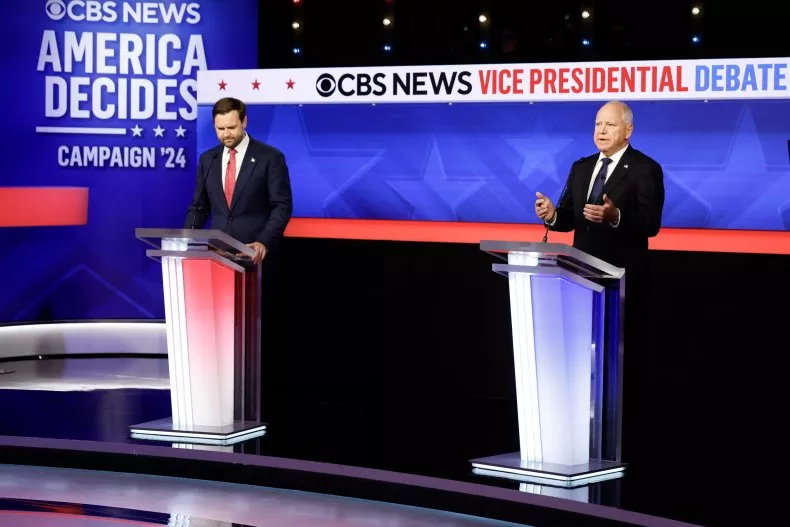
JD Vance and Tim Walz engaged in a policy-driven and relatively civil vice presidential debate on Tuesday night, offering both campaigns a chance to gain momentum in a race where national polling has remained largely stagnant.
Kamala Harris has maintained a modest but steady lead since replacing President Joe Biden as the Democratic nominee in July. After her debate with Donald Trump, where she was seen as the victor, her numbers saw a slight bump. However, in key swing states, the race remains too close to call.
The debate took place during a tumultuous week, both domestically and internationally. Hurricane Helene devastated parts of the Southeastern U.S., including critical swing states like Georgia and North Carolina. Meanwhile, in the Middle East, rising tensions between Iran and Israel threaten to impact the race as an unpredictable “October surprise.”
On the home front, a prolonged strike by dockworkers along the East Coast could disrupt supply chains, creating additional challenges for the Biden administration at a pivotal moment.
The 2024 race has been marked by unusual dynamics. Typically, presidential candidates participate in at least two or three debates, with one following the vice presidential debate. So far, Trump and Harris have faced off only once, with Trump declining a second debate against Harris.
Here are five key takeaways from Tuesday night’s vice presidential debate.
Vance and Walz Avoid Major Missteps in Policy-Driven Debate
In stark contrast to the contentious Harris-Trump debate weeks earlier, JD Vance and Tim Walz kept the discussion focused on policy, avoiding personal attacks while highlighting their differing views on key issues such as immigration and gun violence. Both candidates managed to follow the “do no harm” rule of vice presidential debates, leaving the night without any major gaffes. At one point, their microphones were briefly cut off by CBS News as they sparred over a bipartisan border security bill. Despite the occasional tension, the debate remained largely civil, with Vance and Walz finding common ground on housing and childcare policies.
Vance Stays on Message, Projecting a More Moderate Image
Known for his fiery rhetoric, Vance took a more measured approach during the debate, appealing to moderates and distancing himself from his reputation as an attack dog for Donald Trump. He avoided taking the bait from Walz on sensitive topics and focused on tying his policies to his personal experiences growing up in Appalachia. This strategy allowed him to resonate with voters who may have been turned off by Trump’s more confrontational style.
Middle East Conflict Becomes a Key Debate Topic
The debate opened with a discussion on the escalating conflict between Iran and Israel, which has the potential to shake up the race in its final weeks. Vance took the opportunity to emphasize Trump’s “peace through strength” approach, contrasting it with what he framed as the Biden administration’s failures in foreign policy. Walz, meanwhile, criticized Trump for unraveling the international coalition that had restricted Iran’s nuclear ambitions. Both candidates expressed strong support for Israel, though Walz avoided directly answering whether the U.S. should back a preemptive strike against Iran.
Vance Plays to Trump, Earning Real-Time Praise
Trump’s influence loomed large over the debate, with Vance frequently praising the former president’s policies on border security, trade, and healthcare. Vance’s loyalty to Trump — a former critic turned staunch supporter — was rewarded with glowing remarks from Trump on Truth Social. Throughout the debate, Vance made sure to align himself closely with Trump’s record, a clear bid to reassure the former president’s base ahead of November.
Walz Courts Moderates, Stresses Bipartisan Policies
Walz positioned himself as the centrist candidate, emphasizing Harris’ and his support for “all-the-above” energy strategies and reasonable gun control measures. He avoided defending Harris’ more progressive stances, focusing instead on appealing to moderate voters in swing states like Michigan, Pennsylvania, and Wisconsin. Walz’s debate strategy aligned with the Harris campaign’s broader goal of courting centrist independents and disillusioned Republicans, aiming to secure the “Blue Wall” states critical to an Electoral College victory.